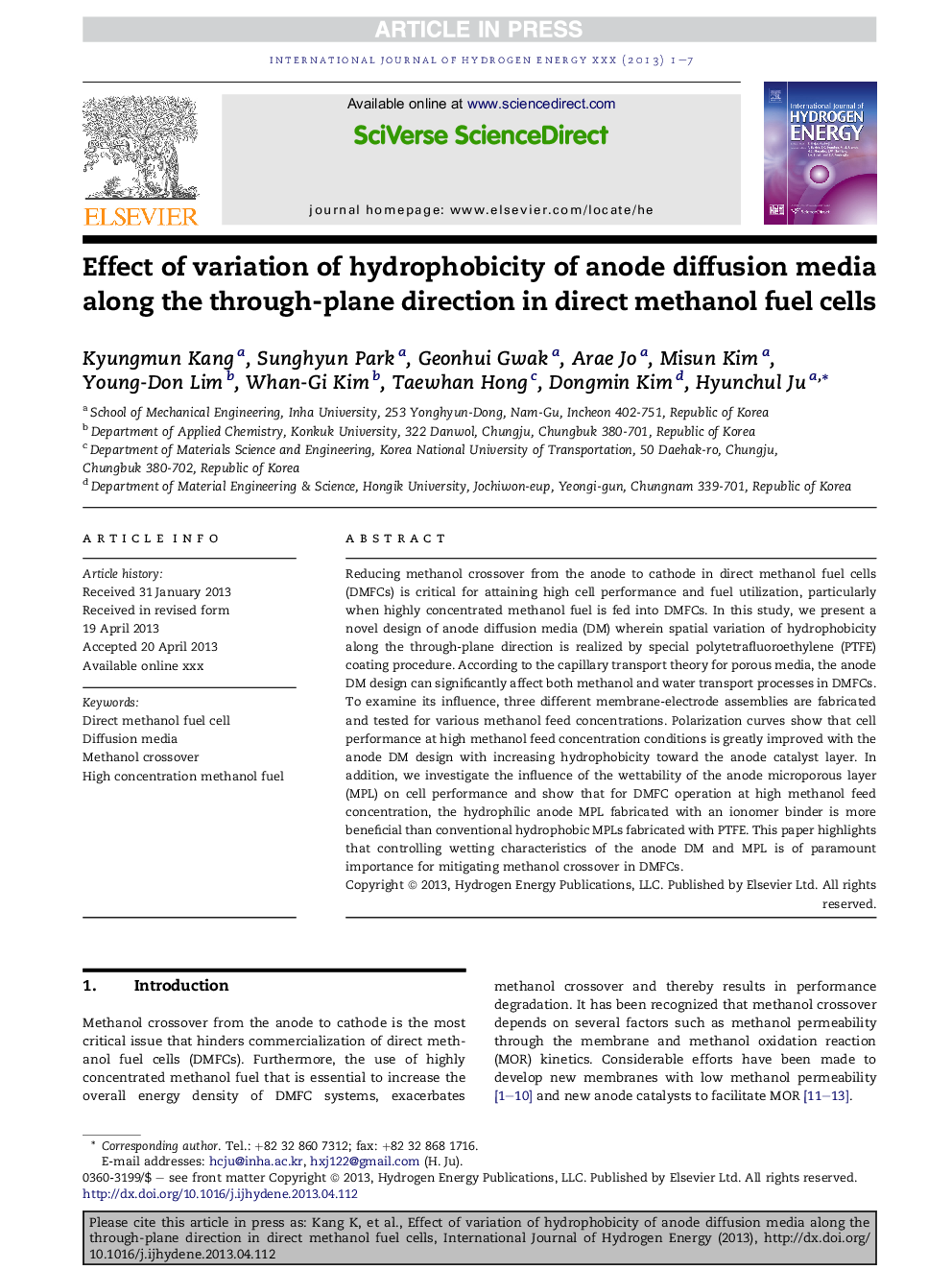| Article ID | Journal | Published Year | Pages | File Type |
|---|---|---|---|---|
| 7720957 | International Journal of Hydrogen Energy | 2014 | 7 Pages |
Abstract
Reducing methanol crossover from the anode to cathode in direct methanol fuel cells (DMFCs) is critical for attaining high cell performance and fuel utilization, particularly when highly concentrated methanol fuel is fed into DMFCs. In this study, we present a novel design of anode diffusion media (DM) wherein spatial variation of hydrophobicity along the through-plane direction is realized by special polytetrafluoroethylene (PTFE) coating procedure. According to the capillary transport theory for porous media, the anode DM design can significantly affect both methanol and water transport processes in DMFCs. To examine its influence, three different membrane-electrode assemblies are fabricated and tested for various methanol feed concentrations. Polarization curves show that cell performance at high methanol feed concentration conditions is greatly improved with the anode DM design with increasing hydrophobicity toward the anode catalyst layer. In addition, we investigate the influence of the wettability of the anode microporous layer (MPL) on cell performance and show that for DMFC operation at high methanol feed concentration, the hydrophilic anode MPL fabricated with an ionomer binder is more beneficial than conventional hydrophobic MPLs fabricated with PTFE. This paper highlights that controlling wetting characteristics of the anode DM and MPL is of paramount importance for mitigating methanol crossover in DMFCs.
Related Topics
Physical Sciences and Engineering
Chemistry
Electrochemistry
Authors
Kyungmun Kang, Sunghyun Park, Geonhui Gwak, Arae Jo, Misun Kim, Young-Don Lim, Whan-Gi Kim, Taewhan Hong, Dongmin Kim, Hyunchul Ju,
